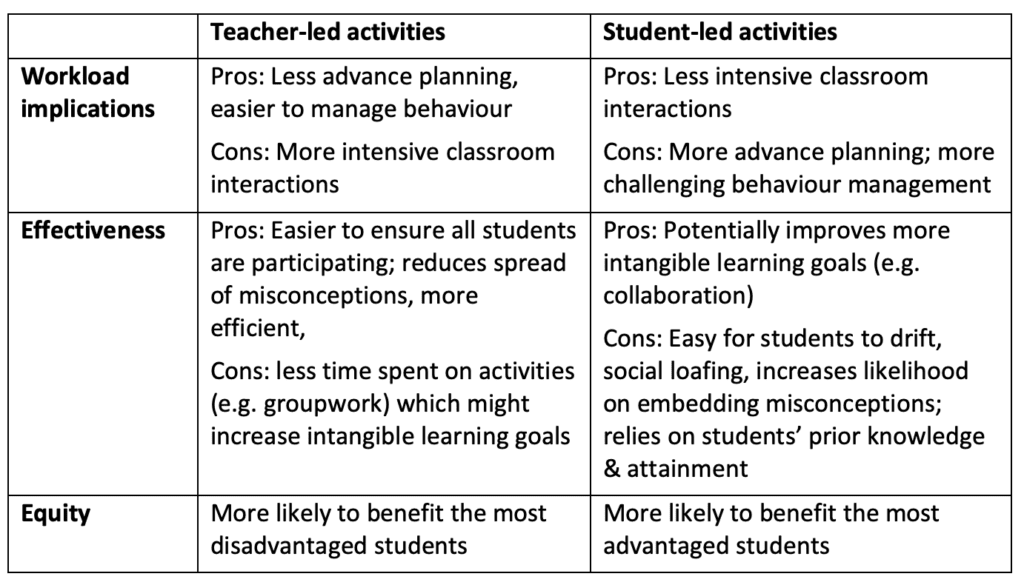For as long as I’ve been writing about education, many commentators have argued that teaching should seek to balance teacher-led and student-led activities. Although this is often presented as self-evidently obvious, it rather begs the question. What’s so great about balance? Should we seek balance for its own sake, because it’s intrinsically valuable, or should we consider what we want to balance? Despite balance sounding – well – balanced, no one would argue that we should seek to achieve a balance between effective and ineffective activities, so to argue that teaching should include both teacher-led and student-led activities we really need to make the case that both are inherently worthwhile.
This has been on my mind again because of a recent discussion with a colleague where we explored the idea that teacher-led lessons are more demanding for teachers and that maybe one reason for balancing activities would be allow teachers some down time in lessons where they can catch their breath whilst students get on with something independently. This was an angle I hadn’t considered previously. I’d always taken the view that teacher-led activities (reading aloud, questioning, mediating classroom discussions, using mini whiteboards to ensure participation in thinking and writing and the other activities outlined here) were not only more effective, but also more straightforward for teachers than student-led activities (small group discussions, project work etc.1) Like many teachers, I’ve found the faff involved in trying to make student-led activities work rarely – if ever – repaid the effort. But, as long as the classroom culture for behaviour is good, I can see that most of this effort would be in planning and designing resources to facilitate the activities in advance of, rather than during, lessons.
To be clear, I’m not arguing that lessons should never contain such student-led activities (some become more or less important in different subjects and with students of different ages) rather that the balance should be disproportionately in favour of teacher-led activities. To make that argument I think it’s helpful to weigh three different indices: workload, effectiveness and equity.
Keep reading with a 7-day free trial
Subscribe to David Didau: The Learning Spy to keep reading this post and get 7 days of free access to the full post archives.





